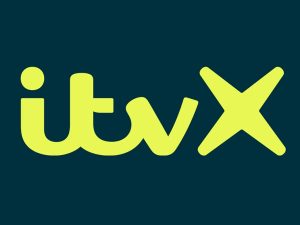
After more than 40 years of operation, DTVE is closing its doors and our website will no longer be updated daily. Thank you for all of your support.
Inside ITV’s digital strategy
 Broadcasters are in trouble. The advertising market is in the doldrums – a supposedly short-term trend related to a significant economic downturn that shows little sign of ending soon. Consumption of linear TV is in long-terms decline – a structural trend that shows no sign of ending at all.
Broadcasters are in trouble. The advertising market is in the doldrums – a supposedly short-term trend related to a significant economic downturn that shows little sign of ending soon. Consumption of linear TV is in long-terms decline – a structural trend that shows no sign of ending at all.
This week we saw the UK’s ITV record plummeting earnings and declining revenues. The top line decline of 2% masked a steeper fall in ad revenues of 11%, although the broadcaster pointed out that this was in line with previously announced guidance. EBITA was down 52%, in line with expectations and in part reflecting its strategic investment in digital.
The blow was however softened by a solid performance from production arm ITV Studios and, notably, by a 24% rise in digital ad revenues to £179 million.
ITV is banking heavily on those digital ad revenues and in particular on its revamped streaming service ITVX, which it says is securing much higher levels of engagement than its predecessor ITV Hub.
The broadcaster has set a target of delivering a minimum of £750 million in digital revenues by 2026.
ITV CEO Carolyn McCall was able to claim that digital revenues largely offset the decline in linear. It is focusing almost exclusively on ad-supported streaming for now, with subscription currently delivering little growth.
“As we supercharge streaming we are maximizing our content assets and our investment in ITVX and Planet V to drive digital viewing and digital advertising revenue,” she said, noting that ITVX had delivered “a step change in viewer metrics”.
ITV has increased its digital content budget and hailed success in targeting ‘light viewers’ – its target audience and in part a euphemism for the hard-to-reach but advertiser-desired young. McCall said viewing among this segment was up 93% on the platform. Streaming hour among 16-34 year-olds was up 56%.
Planet V – the second string to ITV’s digital bow – is aimed at making revenue from targeted advertising across digital platforms. Targeting is key to the future as it delivers higher CPMs than traditional linear advertising, but this segment will become increasingly competitive as big international subscription players and studios looking to monetise through FAST turn their attention to building ad revenues.
Investing in Planet V – essentially intended as a private self-service programmatic ad sales platform – puts ITV at the front and centre of a key industry trend – the selling of programmatic ad inventory via private platforms rather than open trading, where various middlemen take a significant financial cut from the CPM. As premium video players enter the programmatic space, this movement is likely to accelerate.
ITV says that investment in ITVX will peak this year, enabling it to deliver higher profits going forwards. Moreover, as those revenues become more weighted towards digital, margins will in theory improve too.
McCall was nevertheless keen to emphasise that broadcast remains highly relevant to ITV in delivering mass audiences to advertisers. ‘Optimising broadcast’ is the third leg in ITV’s three-legged strategy alongside investment in ITV Studios (which also hopes to benefit from further investment in streaming content globally) and digital.
As with other traditional broadcasters it is tasked with managing a difficult balancing act of delivering reach while attracting and retaining the attention of younger and better-off viewers who might otherwise drift away to spend all their spare time on global streaming platforms and other forms of entertainment.
Tough first halves
France’s TF1 and M6 meanwhile also reported tough first halves this week. TF1 reported revenues down 12.5% to €1.038 billion for the first six months. Advertising on its own streaming service MYTF1 was the only growth area, up 12.8% to a relatively modest €46.3 million. Its rival M6 meanwhile delivered a modest 2.2% uptick in non-TV advertising, delivering a respectable €76.5 million out of a total revenue pot of €621.9 million.
The French broadcasters are somewhat lagging their UK counterpart in delivering digital revenue. TF1 CEO Rodolphe Belmer is committing to invest €10-€15 million in MYTF1 and the group is banking on it growing its audience, which peaked at 30.9 million in May with an average of 27.8 million this year.
All major European broadcasters are of course focusing on digital to deliver growth (or at least stability) as linear viewing and ad revenues decline, although there are differences of emphasis. RTL in Germany and the Netherlands is notably placing much greater emphasis on building a subscription business.
ITV is focused squarely on its core competency of advertising-supported TV. The results this week show how far it has come in a relatively short time. It still faces challenges. ITVX’s reach is still more weighted towards older viewers than BBC iPlayer, for example, even if its younger audience is growing. The ad-supported streaming market is becoming more competitive.
Nevertheless, traditional broadcasters with strength in local markets could be much better placed to compete in this segment with global streamers currently bolting advertising tiers onto their subscription services or proliferating FAST offerings struggling for recognition. For ITV, the signs that it’s making the right moves are more in evidence than they once were.



